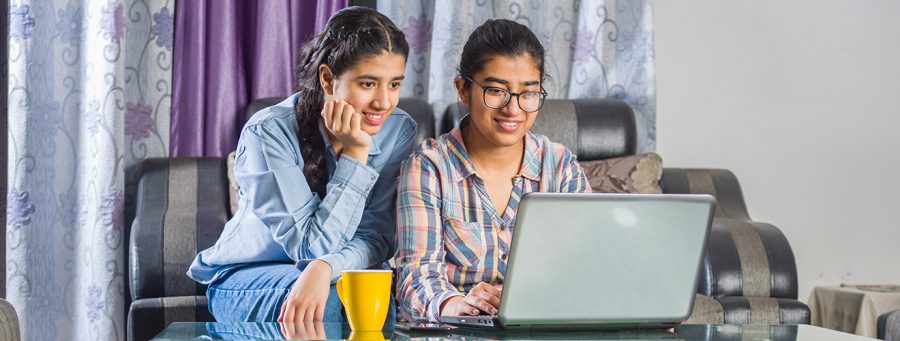Global scan of mental health support initiatives for schoolchildren during COVID-19

From the Oxford COVID-19 Government Response Tracker (OxCGRT)
Summary
| Country | Program |
| India | National hotline for telemedicine- parents support children’s access to consultations |
| Australia | Beyond Blue provides new materials to enable educators to support students |
| USA | CDC resources for parents to support children, PCIT live therapy through an earpiece |
| Saudi Arabia | Online webinars to support children to cope with quarantine and mental health |
| China | 24 hour hotline for children affected, providing access to digital communication |
| South Korea | Resources for parents to support children at home |
| International | Guidelines and factsheets to support parent safeguarding children’s mental health |
With the closure of schools, social distancing and stay at home orders due to COVID-19, providing mental health services to school aged children has presented challenges. This is compounded by the increased pressure which the pandemic is putting on children’s mental health[1][2]. Countries worldwide have reported an increased demand worldwide for mental-health care services, particularly those provided through phone lines and websites, due to the lack of access to in person services[3]. Schools often serve as a de facto mental health system, so with widespread school closures, policies supporting this provision in new spheres is essential to prevent long term harm[4][5].
Using the OxCGRT database, as well as additional research, we present case studies from four countries that have introduced policies to provide mental health support for school children during the COVID-19 pandemic. In preparing this report, we sought input from OxCGRT’s contributor base, but did not get enough responses to constitute a comprehensive global scan. This report instead provides insight into a few key themes: teleconsultations, digital content provision, and supporting primary caregivers to support their school aged children at home. Noted by the OECD but not discussed here is the importance of poverty alleviation measures, such as household income support, cash transfers, or tax relief in reducing the negative impacts that increasing household poverty can have on school age children and their mental health, as a result of malnutrition, increased domestic violence, poor quality housing, homelessness, and lack of access to digital homeschooling resources or an internet connection[6],[7],[8].
Teleconsultations
Telemedicine and the provision of telemental health services have burgeoned as a strategy to deliver care remotely and replace traditional face to face encounters[9]. In India[10], a central national telephone hotline has been set up where parents are able to put their child on the phone to receive guidance[11]. In the USA, telemedicine interventions using Parent-Child Interaction Therapy (PCIT) have been used to support parents and children during COVID-19. The intervention involves the therapist providing coaching during live family interactions via a parent-worn earpiece. Using videoconferencing software, parents broadcast home interactions in real time to a remote therapist and receive guidance[12]. In China, cities such as Zhengzhou opened free counseling hotlines, available 24 hours a day to support children[13]
Digital content provision
In Australia, the long standing Beyond Blue mental health organisation launched a Coronavirus Mental Wellbeing Support Service with new and specific resources to encourage educators to help their students and young people to cope with the pandemic[14],[15]. Saudi Arabia’s healthcare transformation team at the Ministry of Health launched six webinars broadcast over YouTube, with topics including storytelling, arts, physical activity, nutrition, music, humour and magic tricks aiming at reducing the psychological consequences and stresses imposed on quarantined children[16][17]. In China, following the nationwide school closures, an emergency homeschooling plan was implemented, to create online courses delivered by TV broadcasts and the internet.
Supporting and educating primary caregivers
Supporting parents is seen to be a key way to support students[18]. In the USA, the Centre for Disease Control released resources for parents who have been stepping into the role of educators[19]. These resources include conversation starters, print-at-home door hangers, information on how to recognize fear and anxiety, ideas for science projects, craft activities and short projects specifically designed to reduce the stress. In China, the National Health Commission issued specific strategies for children who were quarantined, including ensuring that children had increased communication with their parents via a mobile device at any time to reduce feelings of isolation[20]. In South Korea national institutions and mental health organisations provided psychoeducational guidelines to support parents- helping them to describe the coronavirus to children and on how to reassure children at home[21],[22]. International organisations such as the WHO, UNICEF, AACAP, and IACAPAP have also provided guidelines and factsheets to support parents and educate them on how best to support children. Specific interventions include establishing a clear daily routine, maintaining regular contact with children in quarantine, and encouraging regular video contact with friends[23].
Authors: Andrew Wood, Zoha Minal Imran, Ellen Sugrue, Marryam Ishaq, Selby Abraham, Tiwalade Olagbegi, Anthony Sud, Helen Tatlow
[1] https://doi.org/10.1016/S2215-0366(20)30570-8[2]www.web.archive.org/web/20210128201717/https://read.oecd-ilibrary.org/view/?ref=132_132643-m91j2scsyh&title=Combatting-COVID-19-s-effect-on-children
[3]https://www.theguardian.com/australia-news/2020/aug/05/kids-helpline-says-demand-in-victoria-for-its-counselling-service-rose-8-in-july
[4] https://jamanetwork.com/journals/jamapediatrics/fullarticle/2764730%C2%A0%C2%A0
[5] https://jamanetwork.com/journals/jamapediatrics/fullarticle/2764730%C2%A0%C2%A0
[6] http://www.oecd.org/coronavirus/policy-responses/combatting-covid-19-s-effect-on-children-2e1f3b2f/
[7] http://www.oecd.org/coronavirus/policy-responses/combatting-covid-19-s-effect-on-children-2e1f3b2f/
[8] http://www.oecd.org/coronavirus/policy-responses/combatting-covid-19-s-effect-on-children-2e1f3b2f/
[9] https://www.frontiersin.org/articles/10.3389/fpubh.2020.556720/full
[10]http://web.archive.org/web/20201224073247/https://www.mohfw.gov.in/pdf/GuidelinesforDeliveryofMentalMentalHealthcareServicesduringtheCOVID19.pdf
[11]https://health.economictimes.indiatimes.com/news/diagnostics/mental-health-experts-switch-to-teleconsultation-mode/76146808
[12] https://psycnet.apa.org/fulltext/2020-41658-001.pdf
[13]https://www.thelancet.com/journals/lanchi/article/PIIS2352-4642(20)30096-1/fulltext?luicode=10000011&lfid=1076036655475536&u=https://www.thelancet.com/journals/lanchi/article/PIIS2352-4642(20)30096-1/fulltext
[14] https://beyou.edu.au/resources/news/covid-19-supporting-schools
[15] https://coronavirus.beyondblue.org.au/i-am-supporting-others/children-and-young-people.html
[16]https://web.archive.org/web/20201101061404/https://diversityhealthcare.imedpub.com/reducing-the-psychological-impact-of-quarantne-due-to-the-covid19-pandemic-on-children-in-saudi-arabia.php?aid=28634.
[17]https://web.archive.org/web/20201101061404/https://diversityhealthcare.imedpub.com/reducing-the-psychological-impact-of-quarantne-due-to-the-covid19-pandemic-on-children-in-saudi-arabia.php?aid=28634.
[18] https://www.thelancet.com/journals/lancet/article/PIIS0140-6736(20)30547-X/fulltext
[19]https://web.archive.org/web/20210129170826/https://www.cdc.gov/coronavirus/2019-ncov/daily-life-coping/parental-resource-kit/adolescence.html
[20]https://www.thelancet.com/journals/lanchi/article/PIIS2352-4642(20)30096-1/fulltext?luicode=10000011&lfid=1076036655475536&u=https://www.thelancet.com/journals/lanchi/article/PIIS2352-4642(20)30096-1/fulltext
[21] https://psycnet.apa.org/fulltext/2020-43459-001.html
